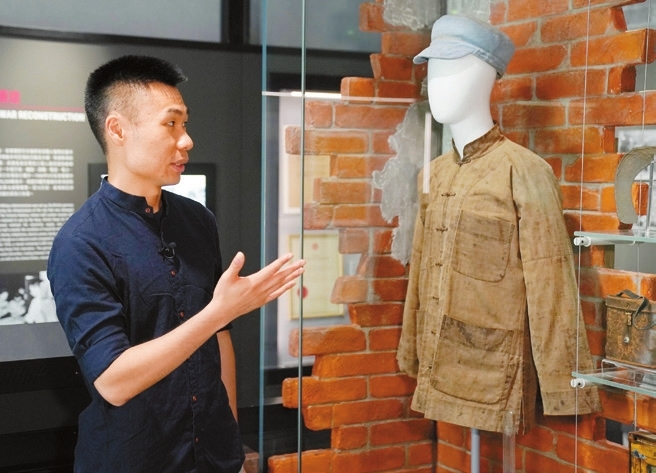
LOCATED at a former military site, the Hong Kong Museum of Coastal Defence was converted from the Lyemun Fort built in 1887 on a headland overlooking Lyemun Pass. Along the winding mountain path near the museum, there were pillboxes and artillery shells around. Lyemun, located at the eastern approach to Victoria Harbor, is the narrowest watercourse between Hong Kong Island and the Kowloon Peninsula. “Lyemun was considered a strategic site due to its unique geographical location,” said Natalie Leung, assistant curator of the museum. After World War II, Lyemun Fort was no longer strategically important. In view of its historical significance and unique architectural features, the Hong Kong Special Administrative Region (SAR) Government turned it into a museum and opened it to the public in 2000. After a major revamp, the museum reopened in 2022, with a new permanent exhibition featuring a wide range of collections. “The content of the exhibition also extended from the Tang Dynasty (618-907) to the Ming Dynasty (1368-1644),” said Franco Yeung, assistant curator of the museum, adding that Hong Kong’s maritime defence service could be traced back to the Tang Dynasty, when Hong Kong had set up a military town around Tuen Mun to guard the waterway trade and commerce of the Pearl River estuary. Entering the 21st century, Hong Kong’s coastal defence and military history has opened a new chapter. “The visit of the country’s first aircraft carrier Liaoning to Hong Kong in 2017 was of great significance. The officers on board lined up to form ‘Hello Hong Kong’ in Chinese characters to express their greetings to Hong Kong people,” Yeung recalled. Later, the museum put a 1:350 Liaoning ship model on display. Hong Kong Museum of Coastal Defence is the only military museum in the territory. Leung said that since it reopened in 2022, the museum has provided more content relating to the history of the Japanese attack on Hong Kong, the Battle of Hong Kong, and the Hong Kong-Kowloon Independence Brigade of the East River Column to deepen public awareness of this chapter of Hong Kong’s history. On Dec. 8, 1941, the Japanese army attacked Hong Kong. After 18 days of confrontation, Hong Kong fell and entered the days of darkness during the “three years and eight months” of Japanese occupation. Hong Kong people contributed to the War of Resistance Against Japanese Aggression in various ways, with some of them supporting behind the enemy lines, and some going to the front lines. “The War of Resistance Against Japanese Aggression in Hong Kong involved the participation of all people, during which the concerted efforts formed was the most cherished collective memory and core value of Hong Kong,” said Wu Junjie, chairman of the Hong Kong War History Research Association. Wu said that the stories about the “three years and eight months” period were good materials for teaching the history of people’s fight against Japanese aggression. In 2021, the Hong Kong Museum of Coastal Defence started an oral history interview program in cooperation with schools, organizations and historical research groups to look for “three years and eight months” witnesses. Despite the difficulties such as the epidemic and the passing of the interviewees, participants of the program are still collecting the oral history of those who witnessed the war of resistance in Hong Kong. “It is hoped that the audience can face up to and attach importance to this period of war history, remember the compatriots who sacrificed in defending the country, understand the blood connection between Hong Kong and the country, and enhance the sense of belonging and identity,” Leung said. (Xinhua) | 
